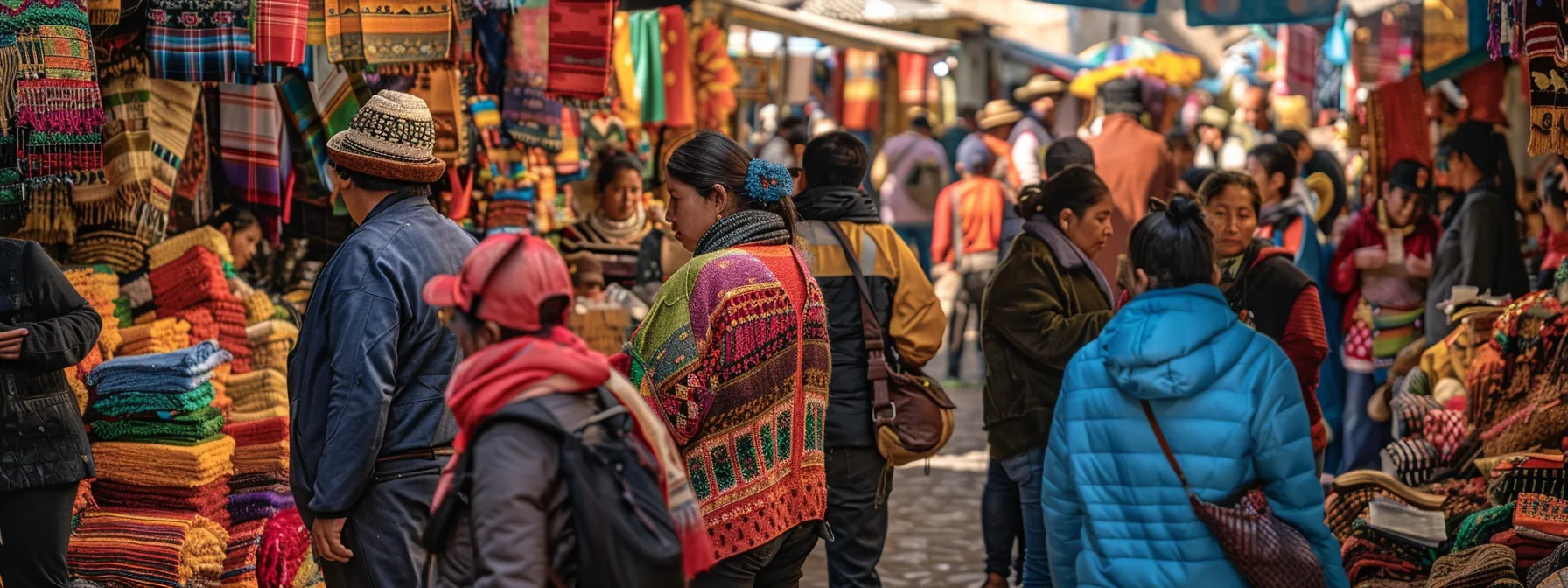Welcome to our comprehensive Bolivia travel guide. This guide is your passport to an unforgettable journey through a country that’s as diverse as it is captivating.
Bolivia, a landlocked gem in the heart of South America, is a treasure trove of unique experiences. From the dizzying heights of La Paz to the sprawling salt flats of Uyuni, Bolivia is a country that never ceases to amaze.
This guide is designed to help you navigate Bolivia’s rich tapestry of regions, cities, and destinations. We’ll delve into the country’s vibrant culture, explore its varied climate, and provide practical information on entry requirements.
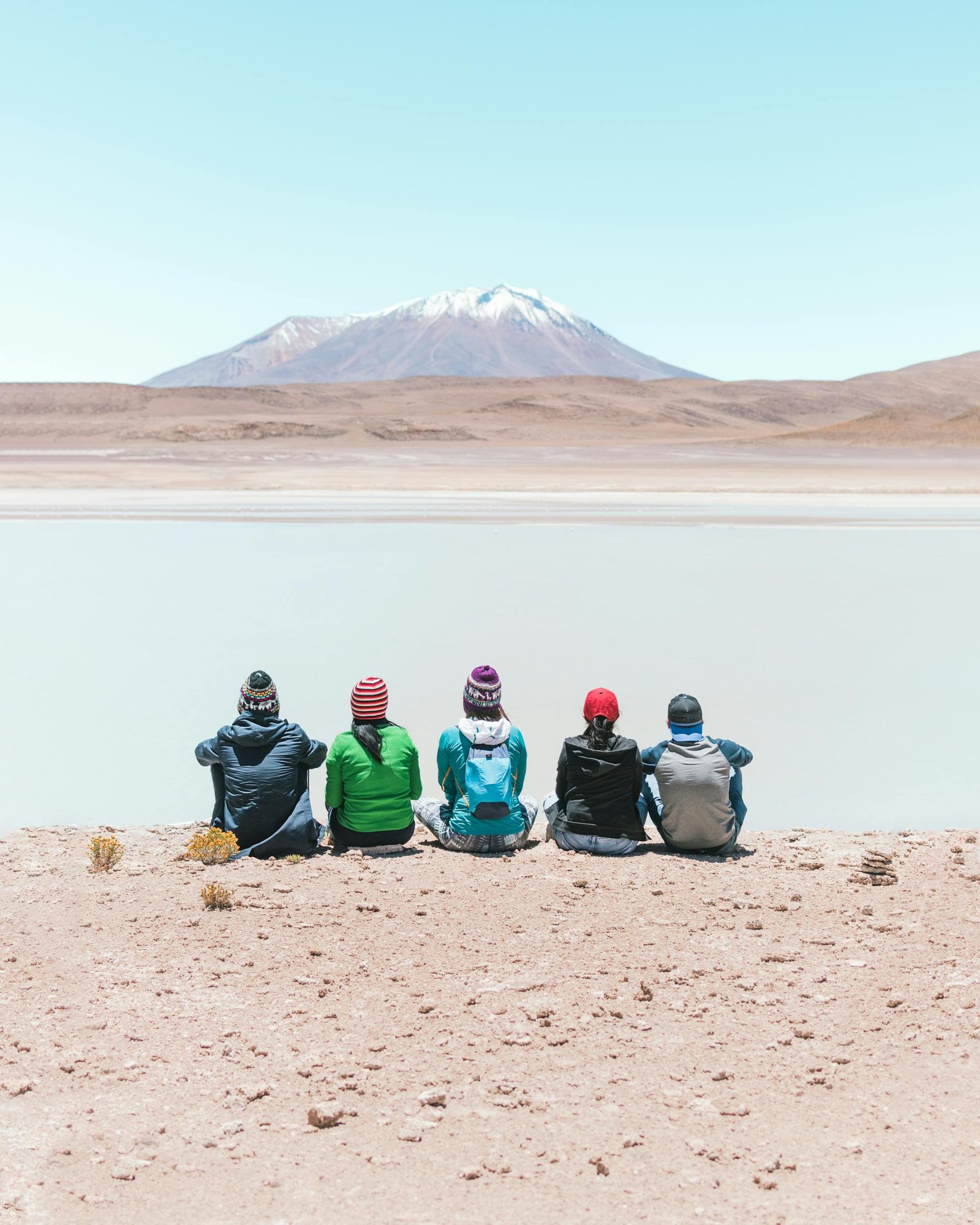
Whether you’re planning to travel by land, by plane, or even by train, we’ve got you covered. We’ll guide you on how to get to Bolivia from Europe, Latin America, or the USA. We’ll also provide tips on getting around Bolivia by car, bus, or train.
Visa information is a crucial part of any travel planning. We’ll provide you with the necessary details to ensure a smooth entry into Bolivia. We’ll also share important safety tips and health precautions to consider while traveling.
Bolivia is a country that’s rich in attractions. From the bustling markets of La Paz to the tranquil shores of Lake Titicaca, there’s something for every traveler. We’ll help you craft the perfect Bolivia itinerary, highlighting the must-see attractions and hidden gems.
Our goal is to make this guide your go-to resource for all things Bolivia. We want to inspire you to explore, to immerse yourself in the culture, and to fall in love with this incredible country.
So, are you ready to embark on an unforgettable Bolivian adventure? Let’s get started!
Discovering Bolivia: An overview
Bolivia is a country filled with wonders that captivate the soul and spirit. From the Andes’ peaks to the Amazon’s depths, Bolivia offers a diverse landscape teeming with life and cultural richness. Bolivia is a unique place because it blends indigenous culture with colonial influences.
This mix creates many stories that are ready to be explored.
This landlocked nation in South America is home to a variety of climates and terrains. Here, you can find everything from soaring mountains to sprawling deserts. Each region boasts distinct attractions and experiences, providing endless opportunities for exploration.
Whether you’re an adventure-seeker or a culture enthusiast, Bolivia welcomes you with open arms.
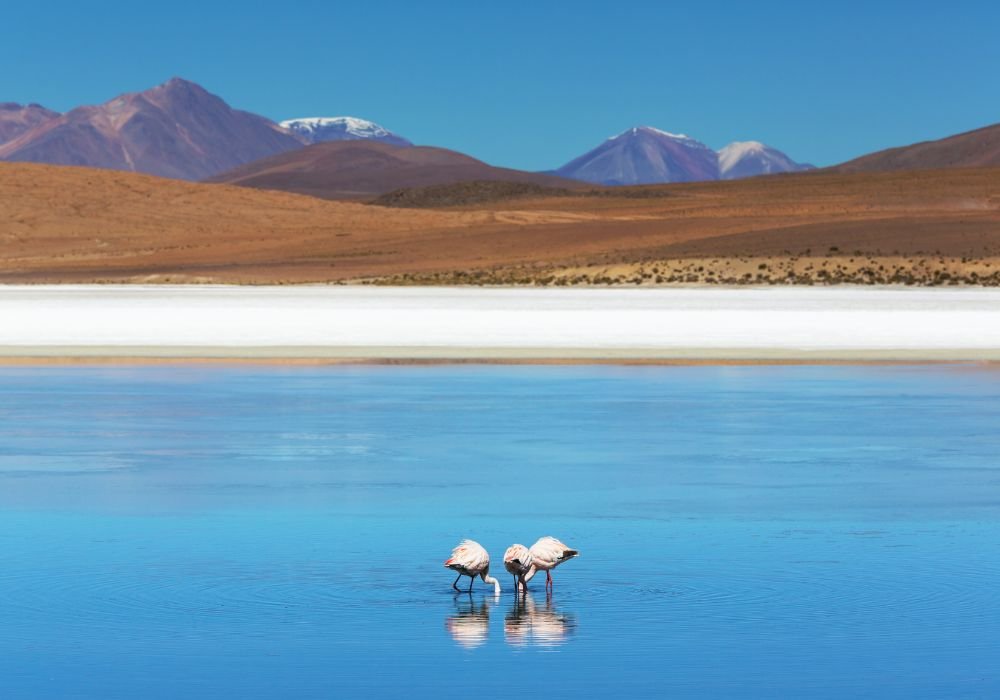
When visiting Bolivia, prepare for vibrant festivals, warm-hearted locals, and spectacular scenery. The country’s cultural heritage is as vast as its landscapes. For those keen on immersing themselves in local traditions, Bolivia’s array of festivals offers vibrant colors and captivating music.
Bolivia at a glance. Bolivia travel guide
Bolivia is a country of contrasts and surprises. It is divided into nine regions, each with unique characteristics that cater to a range of travelers. La Paz, the administrative capital, is the highest capital city in the world. It offers beautiful views and many important cultural sites.
Bolivia has many attractions. One is the Salar de Uyuni, the largest salt flat in the world. Another is Lake Titicaca, the highest navigable lake, which it shares with Peru. Potosí, once famed for its silver, and Sucre, with its colonial charm, add historical depth to any itinerary.
- Regions: Nine distinct regions with diverse attractions
- Political capital: La Paz, a city in the clouds.
- Official capital: Sucre.
- Population: Over 11 million people
- Official Languages: Spanish and 36 indigenous languages
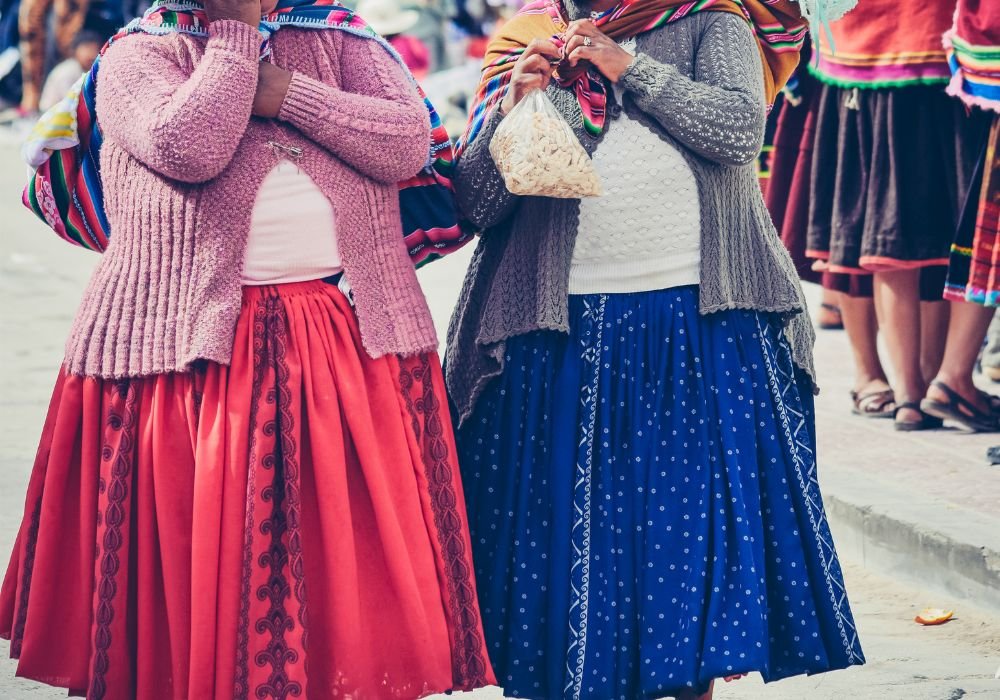
Bolivia offers varying climates, from tropical lowlands to polar highlands. This diversity allows for year-round exploration and a dynamic range of activities. Hikers, nature lovers, and culture seekers will find plenty of reasons to fall in love with Bolivia.
Why Bolivia should be on your travel list
Bolivia is a treasure chest of unique experiences and breathtaking landscapes. It’s a must-see destination for the adventurous traveler looking to discover raw beauty and authentic culture. Few places in the world can match Bolivia’s rugged charm and natural wonder.
Not only is the scenery captivating, but the cultural interactions are genuinely enriching. Here, you can truly immerse yourself in ancient traditions, whether exploring ancient ruins or partaking in local customs. The warmth and hospitality of the Bolivian people leave a lasting impression.
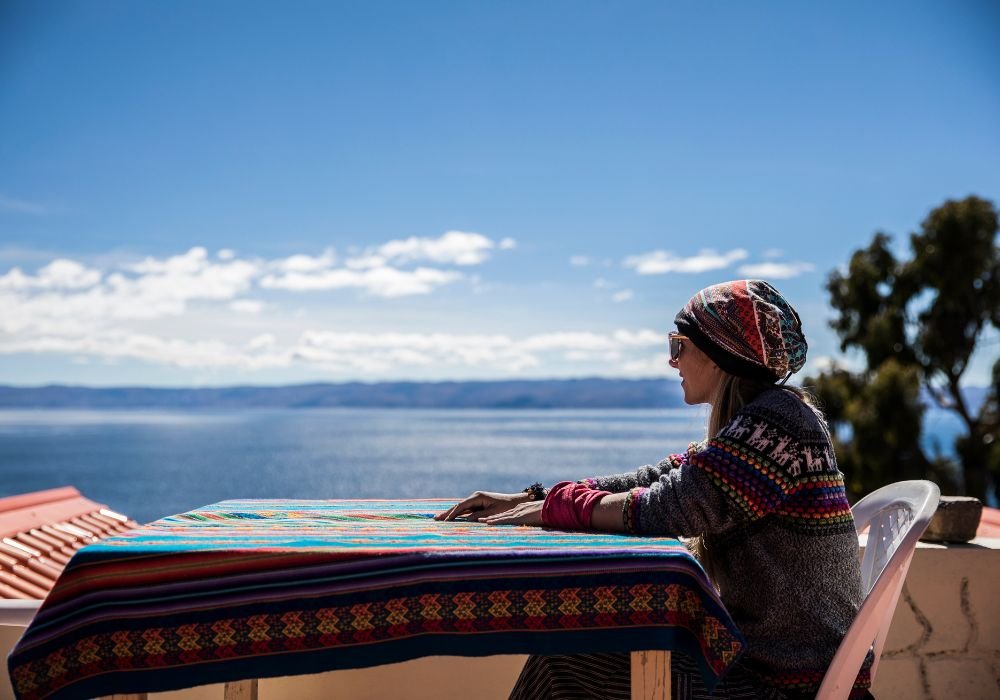
For those seeking adventure, Bolivia offers outdoor activities aplenty, from hiking majestic peaks to exploring dense rainforests. Bolivia has lively street markets, delicious food, and colorful festivals. These features make it an exciting place. You will want to come back again.
Regions and cities of Bolivia
Bolivia is home to a medley of regions, each brimming with unique charm and attractions. From the high peaks of La Paz to the busy streets of Santa Cruz, Bolivia’s cities provide a mix of experiences and cultures. This diversity is what makes Bolivia such an alluring destination for travelers.
The country is divided into several regions. The Andean Region is in the southwest, known as Occidente Boliviano or Altiplano. The Sub-Andean Region is in the center-south, called El Valle Boliviano. The Eastern Plains Region, or Oriente Boliviano, is in the northeast. Each area shows a different side of Bolivian life.
Whether you’re exploring historic cities, bustling markets or pristine nature reserves, each visit promises a memorable experience. Let’s delve into some of Bolivia’s most outstanding cities and regions.
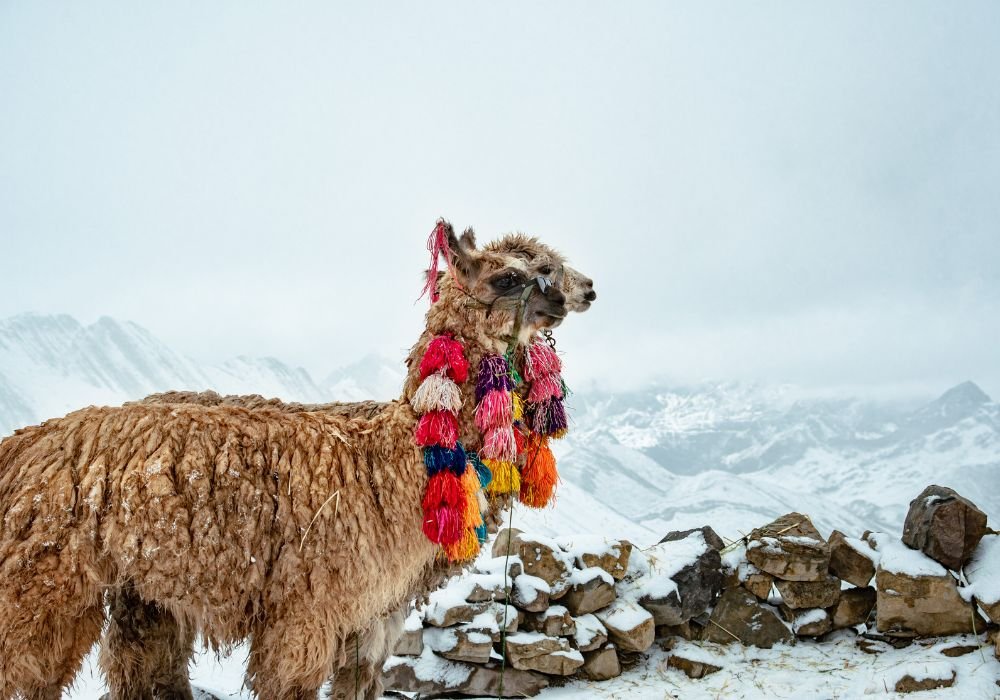
La Paz: The sky-high capital
Perched at an altitude of over 3,500 meters, La Paz is the world’s highest capital city. The city sprawls across a bowl-like valley, surrounded by snow-capped mountains, offering breathtaking views at every turn. La Paz is a blend of the old and the new, where traditional markets coexist with modern cafes.
In La Paz, the rhythms of life are vibrant and the culture palpable. Visit the bustling Witches’ Market for traditional crafts, or explore the historic Plaza Murillo. Each street in La Paz tells a story, inviting travelers to become part of its rich tapestry.
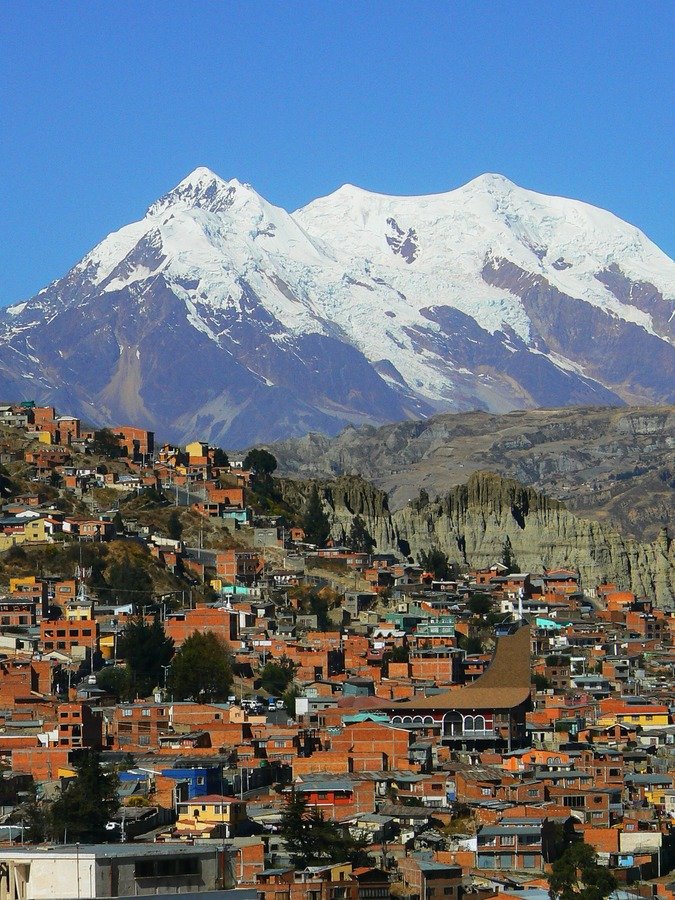
Santa Cruz: The bustling economic heart
Santa Cruz is Bolivia’s most populous city and a vital economic center. Known for its tropical climate, Santa Cruz offers a different vibe from the highland cities. The city boasts lively nightlife, lush parks, and a cosmopolitan atmosphere, reflecting its rapid growth and modernization.
Yet, amid its modern developments, Santa Cruz retains its cultural roots. Explore the city’s vibrant markets, or take a stroll through its historical centers. Santa Cruz is a city that harmoniously blends tradition with progress, making it a must-see destination in Bolivia.
Sucre: The white city of the americas
Sucre, the constitutional capital of Bolivia, is often referred to as “The White City.” Known for its well-preserved colonial architecture and whitewashed buildings, Sucre is a visual delight. The city’s historical significance is profound, having played a crucial role in Bolivia’s journey to independence.
Walking through Sucre feels like stepping back in time. Its charming streets and plazas create an ambiance of tranquility. Visit the museums or relax with a coffee in the main square. Enjoy the peaceful beauty of this UNESCO World Heritage Site.
Potosí: The silver city
Nestled in the Andes, Potosí was once one of the richest cities in the world due to its vast silver mines. This city tells tales of wealth and ambition against the backdrop of the iconic Cerro Rico Mountain. The legacy of its mining past is evident in its rich architecture and historical sites.
Visitors to Potosí can visit the Casa Nacional de la Moneda. This former mint shows the city’s rich history. Potosí stands as a testament to Bolivia’s colonial era, providing travelers with a unique glimpse into the past.
Other notable destinations
Beyond these major cities, Bolivia offers numerous hidden gems waiting to be explored. From pristine natural wonders to cultural landmarks, these destinations provide a well-rounded Bolivian experience.
- Salar de Uyuni: The world’s largest salt flat, a stunning natural spectacle.
- Lake Titicaca: The highest navigable lake, with stunning scenery.
- Madidi National Park: A biodiversity hotspot, ideal for eco-tourism.
- Tiwanaku: Ancient ruins offering insights into pre-Inca civilizations.
- Chiquitos Missions: A cluster of historical Jesuit missions, now UNESCO sites.
Each of these places offers something special to Bolivia. You can find stunning landscapes and a glimpse of the country’s rich culture. Embarking on a journey to these destinations ensures an unforgettable Bolivian adventure.
Bolivian culture: Traditions and modernity
Bolivia’s culture is a vibrant tapestry, woven from indigenous traditions and colonial influences. It’s a land where ancient rituals coexist with modern life, offering a rich cultural landscape for visitors.
The heart of Bolivia lies in its people. Their diverse backgrounds and shared histories create a lively cultural scene. Art, music, and folklore are integral to everyday life, reflecting the country’s rich heritage.
In cities and rural areas alike, cultural expression manifests in colorful festivals, traditional crafts, and unique cuisines. Each region of Bolivia contributes its own cultural flavor, inviting travelers to explore and engage.
Indigenous heritage and spanish influence
Bolivia has a large indigenous population. Their customs and languages are a key part of the national identity. Quechua and Aymara traditions permeate Bolivian culture, from textile arts to spiritual practices.
When the Spanish arrived, they brought new influences that blended with existing customs. This fusion gave rise to unique architectural styles, music, and religious practices that define Bolivia today.
Historic sites across the country highlight this cultural interplay. The Tiwanaku ruins offer a glimpse into pre-Columbian civilizations, while colonial churches showcase Spanish craftsmanship. Together, these elements create a distinctive Bolivian identity.
Festivals and celebrations
Festivals in Bolivia are a feast for the senses, combining vibrant costumes, energetic dances, and heartfelt rituals. One of the most famous events is the Carnaval de Oruro. It is recognized by UNESCO and features grand parades and traditional dances.
Throughout the year, cities and villages come alive with festivities reflecting Bolivia’s diverse heritage. The Gran Poder Festival in La Paz and the Potosí Festival demonstrate deep cultural roots through music and dance.
These celebrations invite both locals and visitors to partake in Bolivia’s joyous spirit. Participating in a festival offers an unforgettable glimpse into the country’s cultural heartbeat.
Bolivian cuisine: A taste of tradition
Bolivian cuisine is a delightful blend of indigenous ingredients and Spanish colonial influences. It is characterized by hearty dishes that reflect the diverse landscapes and climates of the country.
Popular dishes include salteñas, savory pastries filled with meat and vegetables, and llajwa, a spicy tomato and herb sauce. Quinoa, a staple of the Andean diet, features prominently in many meals.
Each region adds its own spin to traditional recipes. In the highlands, you’ll find warming stews, while the lowlands favor lighter, tropical fare. Sampling these culinary delights is a journey through Bolivia’s rich flavors.
Climate and best time to visit
Bolivia’s climate is as diverse as its landscape, presenting a unique experience for every traveler. From lush rainforests to arid deserts, the weather varies dramatically across the country.
Travelers need to plan based on regional climates. The highland areas can be chilly and dry, while the Amazon basin is humid and warm year-round. Understanding these variations can enhance your visit.
Choosing the best time to explore Bolivia depends on your interests. Whether you’re chasing the sun or seeking cooler climates, Bolivia offers an adventure in every season. Let’s explore what this beautiful country has in store for you throughout the year.
Understanding Bolivia’s diverse climate
The geographical diversity of Bolivia plays a significant role in its varied climate. In the highlands, including cities like La Paz and Potosí, temperatures can be cold, especially in the evening. These regions have a dry winter from May to October, considered ideal for trekking and sightseeing due to clear skies.
Meanwhile, the lowlands, including the Amazon and Santa Cruz, experience a tropical climate. Here, it’s warm throughout the year, with a rainy season spanning November to March. This season nurtures Bolivia’s lush landscapes and vibrant biodiversity, making it perfect for Amazonian exploration.
The country’s climatic zones offer a kaleidoscope of experiences. Whether you like the cold, fresh air of the Andes or the warm, humid feel of the Amazon, Bolivia has something for everyone. It’s wise to pack accordingly, ensuring you’re prepared for the weather in your chosen destination.
Seasonal travel tips
Timing your visit to Bolivia can greatly influence your travel experience. The most popular period, especially for the Andes, runs from May to October. The dry, sunny conditions during these months are ideal for activities like hiking and sightseeing.
If you venture into the Amazon or other lowland regions, consider the wet season from November to March. Though the rains can be heavy, this is the best time for wildlife enthusiasts, as the rain brings life to the forests and wetlands.
Regardless of when you visit, Bolivia’s climate promises memorable adventures. To have the best travel experience, mix your interests with the right season. This way, you can enjoy your trip to Bolivia.
Entry requirements and visa information
Traveling to Bolivia is a straightforward process for most visitors. Understanding entry requirements can ease your journey and avoid any unexpected issues. Here’s a breakdown of what to expect for a smooth entry into this remarkable country.
Passport and visa protocols are relatively accommodating for tourists. Depending on your nationality and the purpose of your visit, you’ll find various options that cater to different needs. Knowing these details can ensure a hassle-free experience at the border.
Keep in mind that visa policies can change, so it’s essential to check the latest information before you travel. Whether it’s a short visit or a longer stay, being informed will help you focus on enjoying Bolivia’s wonders.
Passport and visa basics
For most travelers, entry into Bolivia is straightforward with a valid passport. Ensure your passport has at least six months of validity beyond your planned departure. It’s an essential requirement no matter how long you intend to stay.
Tourists from many countries, including Europe and Latin America, can visit Bolivia without a visa for a short time. Typically, this extends up to 90 days, but it’s always good to check specific allowances for your nationality.
Those requiring a visa can usually obtain it at Bolivian consulates or upon arrival at major entry points. This flexibility makes planning your trip less stressful, letting you concentrate on creating unforgettable memories in Bolivia.
Specific requirements for different travelers
Different visa requirements apply based on nationality and visit purpose. U.S. citizens, for example, need a visa for entry, which they can secure in advance or upon arrival. It’s vital to have all necessary documents ready to avoid delays.
For certain work or study visas, you may need extra documents. These can include an invitation letter or proof of financial stability. It’s wise to verify these needs with the nearest Bolivian consulate to ensure complete preparation.
Staying updated with Bolivia’s entry regulations offers peace of mind. With the right documentation, you can focus on the excitement that awaits in this diverse and culturally rich destination. Thorough preparation guarantees you don’t miss a moment of your Bolivian adventure.
Transportation: Getting to and around Bolivia
Bolivia offers diverse and intriguing travel experiences, and how you arrive can add to the adventure. With multiple transportation options, planning your journey can be part of the fun. Whether by air, land, or car, each mode offers unique insights into this incredible country.
Flying into Bolivia is often the quickest and most convenient option for international visitors. Domestic flights provide efficient ways to navigate the country’s varied terrains and reach key destinations. You’ll find flights linking major cities and popular tourist spots within Bolivia.
For those seeking a more immersive experience, land travel offers a closer connection to Bolivian landscapes and culture. Buses and trains traverse the country, providing scenic routes and affordable options. It’s a perfect choice for those with time to savor the journey.
Car rentals offer the freedom to explore off-the-beaten-path destinations. However, Bolivia’s road conditions can challenge the unprepared. Understanding the layout and driving habits can ensure a safe road adventure.
In cities, public transport systems like buses and special options such as La Paz’s cable cars make getting around easy. This convenience allows you to explore the urban culture with ease and efficiency.
By plane: International and domestic flights
Flying remains a popular choice for those arriving from international destinations. Flights to Bolivia usually connect through cities like Miami, São Paulo, or Madrid. This makes the trip easier for travelers from the USA, Europe, and Latin America.
In Bolivia, domestic flights can help you save time. This is especially true when visiting faraway places like the Amazon Basin or Uyuni’s salt flats. Airlines like Boliviana de Aviación offer regular service to all major cities. This allows for a quicker transition to exploring the diverse regions.
International travelers typically arrive at El Alto International Airport in La Paz or Viru Viru International Airport in Santa Cruz. Both airports feature modern facilities and are gateways to a world of exploration. Whether your journey focuses on the Andes or the tropics, flying sets the stage for the excitement ahead.
By Land: Buses and Trains
Exploring Bolivia by land opens doors to unforgettable experiences. Buses are a common choice, connecting cities and rural areas with a network of routes. Long-distance buses range from basic to luxurious, catering to different comfort needs and budgets.
Trains, although fewer in number, offer unique journeys through scenic parts of the country. The Expreso del Sur and Wara Wara del Sur routes are popular for their picturesque views and cultural insights.
Choosing to travel by bus can save money and offer a rich experience. This is especially true for those who want to enjoy Bolivia’s lively local culture. Schedules vary, so checking ahead ensures you don’t miss connections. Whether hugging the Andes or crossing the altiplano, land travel offers a deeper understanding of Bolivia’s terrains.
By car: Rentals and road conditions
Exploring Bolivia by car allows for a personalized adventure. Renting a vehicle offers flexibility and access to remote destinations. However, it’s crucial to be aware of road conditions that vary greatly across the country.
Bolivia’s roads range from well-paved highways to rugged mountain paths. The altitudes and winding roads can pose challenges, making it vital to plan routes carefully. Avoid night driving in remote areas and ensure your rental has the necessary insurance and permits.
Before embarking on a road trip, understanding local driving customs enhances safety. GPS may not work well in remote places, so it is smart to have a physical map. With preparation, your driving adventure can lead to some of Bolivia’s hidden gems.
Traveling within cities: Public transport options
In Bolivian cities, public transport is both economical and convenient. Minibuses, known locally as “micros,” and buses operate frequently, covering most urban areas. Fares are affordable, though it can be crowded during peak hours.
La Paz offers a distinctive mode of transport with its cable car system. “Mi Teleférico” spans the city’s steep terrains, providing breathtaking views and avoiding traffic congestion. It’s a novel way to see the city while connecting key districts.
Taxis and ride-sharing services are also widely available in urban areas. Agree on a fare beforehand if taxis are unmetered. Whether you are walking the busy streets of Santa Cruz or the historic roads of Sucre, these choices make city travel easy and fun.
Safety while traveling in Bolivia
Traveling in Bolivia offers incredible experiences, but like any destination, it’s important to be aware of certain safety considerations. Understanding local customs and potential risks enhances your adventure while ensuring peace of mind.
Taking simple precautions can help prevent most issues. Petty crime such as pickpocketing can occur in busy markets and tourist areas. It’s advisable to keep valuables secure and stay vigilant in crowded spaces.
Always trust your instincts. If something feels off, it’s better to steer clear. Check current political situations as protests can disrupt travel plans. Staying informed through reliable sources is key to ensuring a smooth journey.
Nature lovers should respect the country’s diverse landscapes. Whether tackling mountain routes or exploring jungles, being prepared ensures safety. Bolivia’s natural beauty is breathtaking, and by exercising care, you can enjoy every moment.
Common safety concerns
While Bolivia is generally a safe destination, travelers should remain mindful of their surroundings. Common safety concerns include petty crime, especially in areas with large crowds. Keeping personal items close reduces risk.
In urban settings, it’s best to avoid displaying expensive belongings, as it could attract unwanted attention. Taxi scams can occur, so agree on fares in advance or use known ride-hailing apps. Sticking to reputable service providers adds an extra layer of safety.
Political demonstrations are not uncommon and may disrupt plans, particularly in larger cities. Participating in protests is advised against, as situations may escalate unpredictably. Monitoring local news and your embassy’s updates is wise.
Cautious planning goes a long way in ensuring a safe trip. By staying aware and prepared, you’ll enhance your Bolivian adventure without significant worries.
Health precautions and medical services
Traveling to high-altitude regions in Bolivia, such as La Paz and Potosí, can lead to altitude sickness. Gradual acclimatization is essential. Staying hydrated and avoiding excessive physical exertion in the initial days helps.
It is advisable for travelers to consider vaccinations for yellow fever, particularly if visiting the Amazonian regions. Routine vaccinations should also be up to date before departure. Prevention remains the best protection against common ailments.
Bolivia’s healthcare facilities vary, with major cities like La Paz and Santa Cruz offering reliable medical services. Travel insurance is highly recommended to cover any unexpected health needs. Private clinics provide quality care and can assist with minor ailments or concerns.
By taking these health precautions and having a plan in place, your journey through Bolivia can be both safe and enriching. Prepare wisely, and focus on exploring the vibrant culture and stunning landscapes.
Practical tips for the Bolivian adventure
Embarking on a Bolivian adventure requires some savvy planning. Not only does this enhance your experience, but it also ensures you make the most of your travels. Here are some essential tips to keep in mind.
Navigating finances, communication, and cultural etiquette can be crucial. Understanding the currency helps you budget effectively, while knowing the local language eases interactions. Respecting cultural customs adds depth to your journey, fostering genuine connections.
With these considerations, your exploration can be both seamless and memorable. Explore Bolivia’s vibrant mix of sights, sounds, and flavors with confidence. You will have the knowledge to enhance your travels.
Let’s explore practical aspects that will guide you through a remarkable Bolivian adventure.
Money matters: Currency and budgeting
Bolivia’s currency, the Boliviano (BOB), is straightforward once you get the hang of it. Familiarize yourself with denominations to smoothly handle transactions. ATMs are accessible in major cities, allowing for easy currency withdrawal.
Budgeting wisely maximizes your adventure. Transportation and food costs are generally affordable, but it’s prudent to plan for excursions and souvenirs. Street vendors and local eateries offer great value while supporting local businesses.
Having some cash is essential, especially in rural areas where card payments are less common. Use small bills for marketplaces. Tipping, though not obligatory, is appreciated, with 10% customary in restaurants.
Managing your finances efficiently ensures peace of mind. This allows you to focus on discovering Bolivia’s incredible allure without worrying about your budget.
Communication: Language and connectivity
Spanish reigns as the official language in Bolivia, but numerous indigenous languages enrich the linguistic landscape. Phrases in Spanish open doors for meaningful interactions, enhancing cultural exchanges with locals.
Connectivity has improved in recent years. Most urban areas boast reliable internet, while rural spots might challenge your digital habits. SIM cards for travelers are available, ensuring you stay connected.
Wi-Fi is common in cafes and hostels, perfect for travel bloggers needing to update their stories. However, expect occasional connectivity hiccups in remote spots. Being prepared means adjusting to these experiences with ease.
Armed with basic language skills and connectivity options, you can savor the sights of Bolivia while sharing your experiences with the world.
Cultural etiquette and customs
Cultural awareness elevates your Bolivian journey, showing respect for local traditions. Learning key aspects of etiquette helps you navigate social landscapes with grace and ease.
Bolivian people are warm and welcoming. A friendly greeting goes a long way, especially when combined with a smile. Handshakes are common, but address elders with deference. Bargaining is common in markets, fostering lively interactions.
Dress modestly and respect indigenous traditions, particularly when visiting sacred sites. Photography is generally accepted, but seeking permission before taking pictures of people or rituals is considerate.
Immersing yourself in Bolivia’s cultural fabric adds a rewarding dimension to your travels. These acts of respect open doors to deeper connections and unforgettable experiences.
Bolivia itinerary ideas
Crafting the perfect itinerary for Bolivia depends on your interests and time. This vibrant country offers numerous highlights and hidden gems waiting to be explored.
Whether you have a week or more, Bolivia promises an array of diverse experiences. From iconic landmarks to secluded paths, there’s something for every traveler’s heart.
Let’s explore various itineraries that can guide your adventure through Bolivia. Prepare to discover natural wonders, cultural treasures, and unique encounters.
A week in Bolivia: The essential highlights
If you have just one week, focus on Bolivia’s must-see destinations. Begin your journey in La Paz, the world’s highest capital. Explore its bustling markets and the dramatic Moon Valley nearby.
Next, make your way to the mesmerizing Salar de Uyuni. The vast salt flats are perfect for breathtaking photos and surreal landscapes. A guided tour ensures you see the highlights, including Incahuasi Island.
Round out your trip with a visit to Lake Titicaca. Explore Isla del Sol’s ancient Inca sites and savor panoramic views. This one-week itinerary covers Bolivia’s top attractions seamlessly.
Two weeks: A deeper dive into Bolivia’s charms
With two weeks at your disposal, dive deeper into Bolivia’s rich tapestry. After La Paz, venture to Sucre, the constitutional capital. Wander through colonial architecture and intriguing museums.
From Sucre, journey to Potosí, known for its historical silver mines. Tour the Cerro Rico and learn about the impact of mining on this once-flourishing city.
Finally, explore the Bolivian Amazon. Spend time in Rurrenabaque, where you can experience jungle treks and wildlife tours. This extended itinerary balances historic landmarks with natural wonders for a well-rounded adventure.
Off the beaten path: Unique Bolivian experiences
Seeking adventures away from the tourist trail? Bolivia offers countless offbeat experiences. Begin your journey with the thrilling Yungas Road, dubbed the Death Road. Cyclists find an adrenaline-fueled ride through striking mountain scenery.
Next, discover the lesser-known Tarabuco Market. Immerse yourself in vibrant textiles and Yampara culture near Sucre. This authentic experience offers a glimpse into local craftsmanship and traditions.
Cap off your journey with a visit to Madidi National Park. As one of the most biodiverse areas globally, it’s a haven for eco-travelers. Guided tours illuminate the wonders of this pristine environment, providing lasting memories.
Conclusion: Embracing the Bolivian journey
Bolivia is a captivating destination that beckons with its diversity and charm. From the heights of La Paz to the depths of the Amazon, it promises an unforgettable journey. The beauty of Bolivia lies in its ability to surprise and inspire travelers, urging them to explore farther and delve deeper.
For aspiring travel bloggers, Bolivia offers rich stories waiting to be told. Its vibrant culture, dramatic landscapes, and warm people provide a tapestry of experiences to weave into captivating narratives. As you document your travels, remember to capture the spirit of adventure that Bolivia embodies.
The heartbeat of this nation will echo in your stories. It will inspire your readers to start their own adventures in Bolivia.
Travel agency managers, let Bolivia be the focal point of your next travel package. Highlight the variety of experiences available, from historical wonders to natural spectacles. By painting a vivid picture, you can entice travelers to choose Bolivia as their next destination. Elevate your offerings by showcasing the unique blend of history, culture, and natural beauty that defines this incredible nation.
Ultimately, a journey through Bolivia is a personal adventure. It’s a chance to connect with a part of the world that feels both familiar and fantastical. Whether you’re traversing bustling city streets or ancient Inca paths, Bolivia leaves an indelible mark on your soul. Embrace it wholeheartedly and let the magic of Bolivia transform you.



